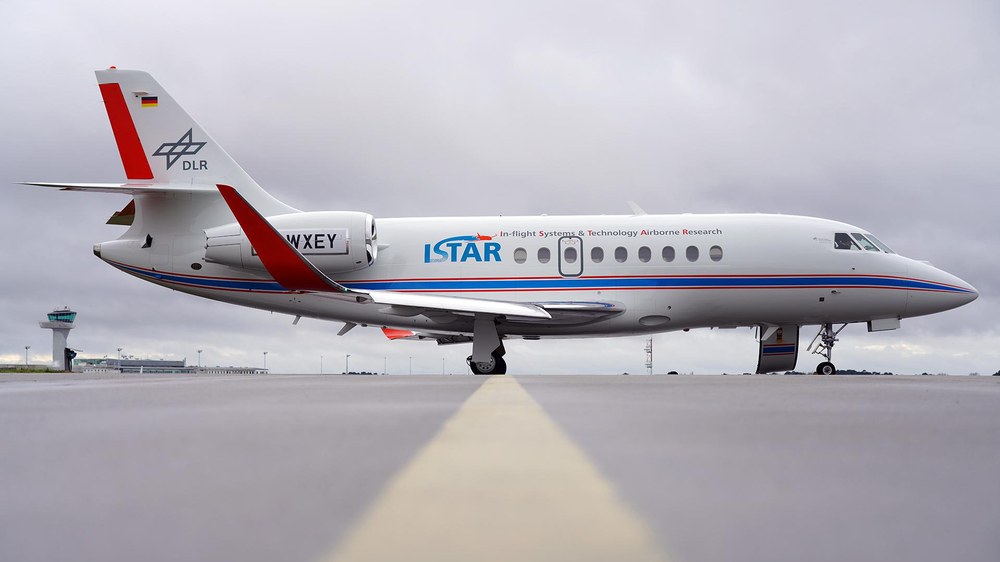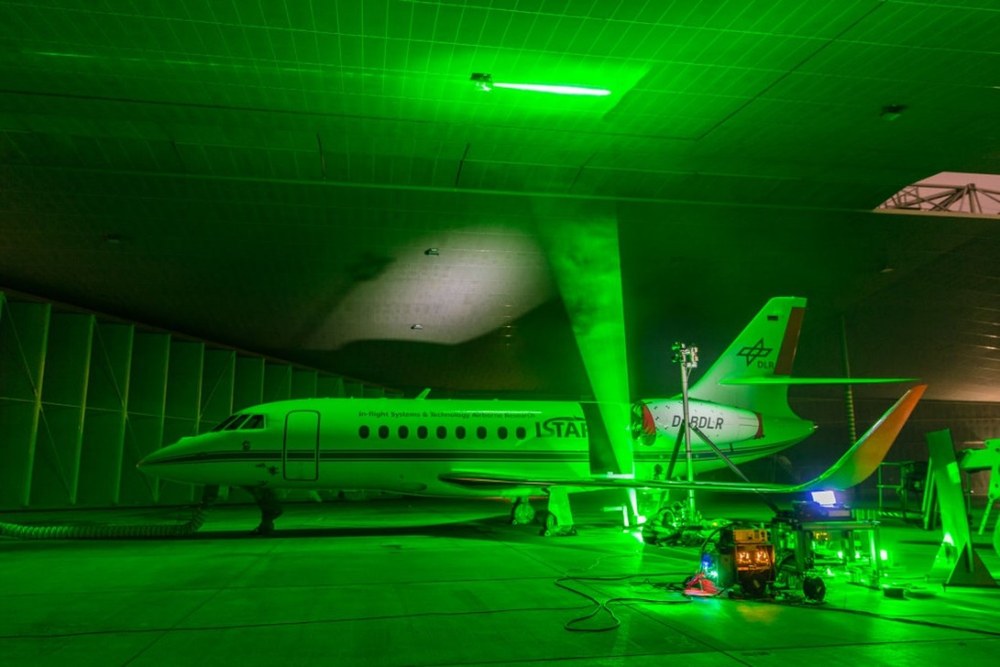HighFly - Aerodynamics, aeroelasticity, structures and propulsion on the ISTAR research aircraft

In the DLR project HighFly (High speed inflight validation), the new DLR research aircraft ISTAR (Dassault Falcon 2000LX) will be used for scientific research for the first time. Aligned with the vision of virtual flight testing and the future topic of simulation-based certification, high-fidelity numerical methods for calculating flow fields and wing loads in areas with a high proportion of non-linear aerodynamics are to be quantified. The project partners will also validate flight dynamic models for real-time simulation in these boundary regions and perform the aeroelastic characterization of ISTAR. Several flight test and ground test campaigns are planned for this purpose:


- The scientists will carry out initial measurement flights for parameter identification (PID). Among other things, they will record flight mechanical and flight dynamic properties of the ISTAR during specific flight maneuvers.
- Based on a Taxi Vibration Test (TVT) and a Ground Vibration Test (GVT) , the structural dynamic vibration properties of the research aircraft will be recorded and characterized. The project partners need these data for the validation and calibration of a numerical structural model.
- Valuable data on the engine inlet flow is collected via ground level tests using PIV measurement techniques. These data are used to validate the numerical high-fidelity methods.
- Finally, in the fourth campaign, extensive flight tests are planned to accurately measure the ISTAR while maneuvering at the envelope boundary (MaGE). Here, the research aircraft will be pushed to the limit of its aeronautical performance. The aerodynamics will be recorded using the latest measurement techniques from DLR in Braunschweig. This will make it possible to improve the flow simulation models in the computer and to design new aircraft more accurately, more lightly and more energy-efficiently.
The analyses of the data obtained by the project team members during all these tests, in conjunction with the numerical calculations, do not only provide best-practice approaches, but also identify procedural gaps to be closed in the future with regard to the above-mentioned vision of virtual flight testing and the future topic of simulation-based certification. Additional topics of importance are the development of validated real-time flight dynamic simulation models of ISTAR.
The real-time simulation models will then be integrated into the DLR flight simulator AVES. This will make valid flight dynamic maneuvers virtually possible and assessable in the future. Conventional flight simulators have deficits especially in the area of flight envelope limits, since only insufficient flight test data are available here. The improvement of flight-mechanical models in the stall range and at speeds in the range of the maximum speed (Vmax) is therefore a current research topic and of high interest. For all recorded data of the flight tests, a concept for the use as data sources for Big Data applications will be developed.
Within HighFly, the DLR Institute of Aerodynamics and Flow Technology is further developing future measurement techniques such as Temperature Sensitive Paint (TSP), acoustic MEMS, in-flight PIV technology, and dynamic, high-precision surface pressure measurement technology based on MEMS for future use in ISTAR flight testing.
Project | HighFly - High speed inflight validation |
|---|---|
Term | 7/2018 - 12/2023 |
Partners |
|
